Last updated on
Transform your kitchen into an eco-friendly haven with these garbage disposal alternatives.
As a seasoned home decorator, I’ve seen it all – from lavish chandeliers to minimalist designs. But one thing that always stands out to me is the importance of functionality in a home.
And what’s more functional than garbage disposal? It’s an appliance that makes our lives easier by grinding up food waste and keeping our kitchens clean. However, not every home has the luxury of having one installed, or perhaps you’re looking for an alternative option that’s more budget-friendly or environmentally conscious.
I’ve compiled 15 garbage disposal alternatives with their advantages and disadvantages, so you can find the perfect solution for your kitchen needs without breaking the bank. Let’s dive in!
Composting
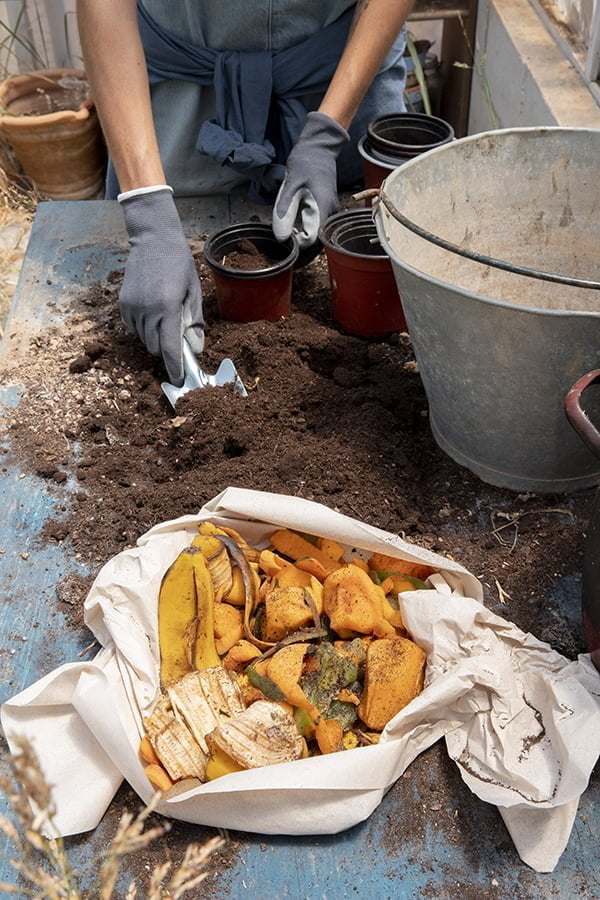
Composting is a great alternative to using a garbage disposal. It involves collecting organic waste such as food scraps, leaves, and grass clippings in a compost bin or pile.
Over time, the materials break down into nutrient-rich soil that can be used for gardening.
One advantage of composting is that it reduces the amount of waste sent to landfills. This helps reduce greenhouse gas emissions and promotes sustainability.
Composting also provides an inexpensive way to fertilize plants without relying on chemical fertilizers.
However, there are some disadvantages to consider when choosing this option. Composting requires space for the bin or pile and may not be feasible for those living in apartments or small homes with limited outdoor areas.
It can take several months before the materials fully decompose into usable soil.
If you have space available and want an eco-friendly way to dispose of organic waste while creating nutrient-rich soil for your garden at no cost – then composting might just be perfect!
Recycling
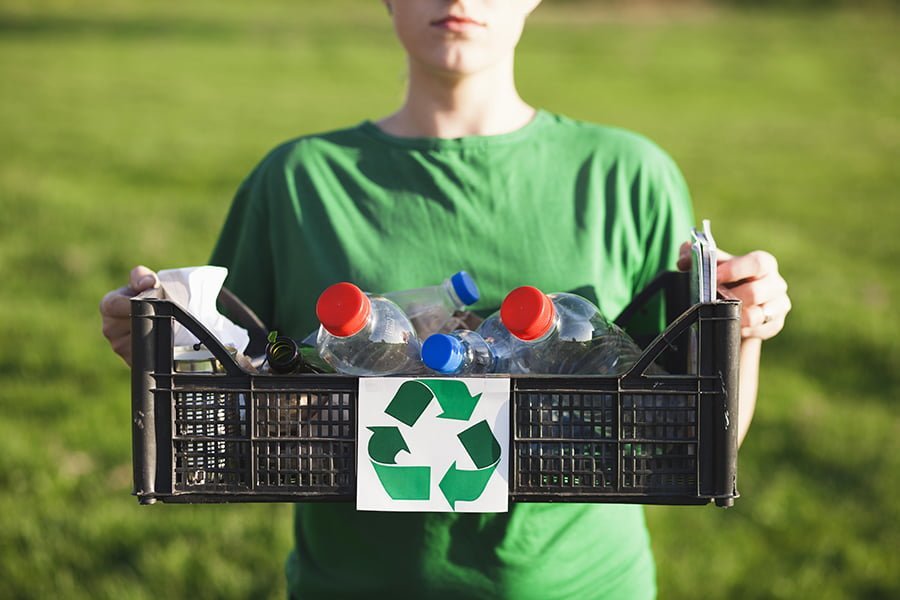
Recycling is one of the most popular garbage disposal alternatives. It involves separating waste materials that can be reused or repurposed from those that cannot.
Recycling helps to reduce the amount of waste sent to landfills, conserves natural resources, and saves energy.
One advantage of recycling is that it reduces pollution and greenhouse gas emissions associated with manufacturing new products from raw materials. Recycling creates jobs in industries such as collection, sorting, processing and manufacturing.
However, there are also some disadvantages to consider when it comes to recycling. For instance:
- Not all types of waste can be recycled.
- The process requires a significant amount of energy which may come from non-renewable sources.
- Recycling facilities may not exist in every area making transportation costs high for some communities.
Despite these challenges though; we should still strive towards reducing our carbon footprint by adopting sustainable practices like recycling whenever possible!
Worm Farming
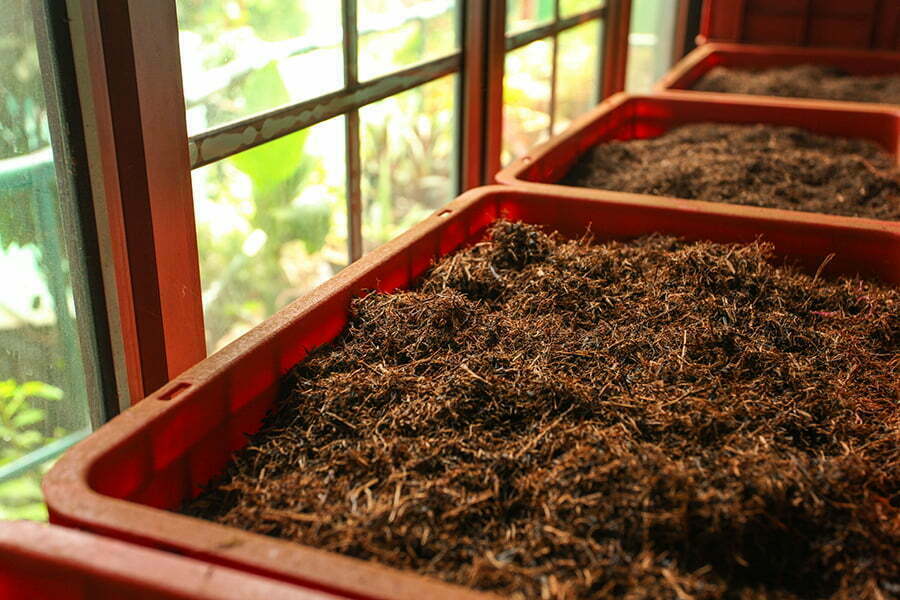
Worm farming is a unique and eco-friendly way to dispose of food waste. It involves using worms to break down organic matter, such as fruit and vegetable scraps, into nutrient-rich compost that can be used in gardens or potted plants.
One advantage of worm farming is that it’s relatively easy and inexpensive to set up. All you need is a container with holes for ventilation, bedding material (such as shredded newspaper), some red wiggler worms, and food scraps.
Another advantage is that worm castings (the end product of the process) are an excellent fertilizer for plants because they contain high levels of nitrogen, phosphorus, potassium and other essential nutrients.
However, there are also some disadvantages to consider when it comes to worm farming. For example:
- Worms require specific conditions in order to thrive – if the environment isn’t right (e.g., too wet or too dry), they may die.
- The process can produce unpleasant odors if not managed properly.
- Depending on how much food waste you generate on a regular basis will determine how many worms you’ll need which could become costly over time.
Overall though, worm farming offers an innovative solution for reducing household waste while creating valuable resources at the same time!
Incineration

Incineration is another garbage disposal alternative that has been gaining popularity in recent years. This method involves burning waste at high temperatures until it turns into ash, which can then be disposed of safely.
One advantage of incineration is that it reduces the volume of waste by up to 90%, making it a great option for those with limited space for trash storage. Some incinerators are designed to generate electricity from the heat produced during combustion.
However, there are also several disadvantages associated with this method. Firstly, incinerators can release harmful pollutants into the air if not properly maintained or operated correctly.
Secondly, they require a significant amount of energy to operate and maintain which may result in higher costs compared to other alternatives such as composting or recycling.
While incineration may be an effective way to dispose of certain types of waste materials quickly and efficiently; its environmental impact should always be considered before choosing this option over others available on the market today.
Bokashi Fermentation
Bokashi fermentation is a composting method that originated in Japan. It involves fermenting food waste using a mixture of beneficial microorganisms, such as lactic acid bacteria and yeasts.
The process takes place in an anaerobic environment, which means without oxygen.
One advantage of bokashi fermentation is that it can handle all types of organic waste, including meat and dairy products. This makes it an excellent alternative to traditional composting methods that cannot handle these materials due to the risk of attracting pests or producing foul odors.
Another advantage is that bokashi fermentation produces a nutrient-rich liquid fertilizer called “bokashi tea.” This tea can be used to nourish plants directly or diluted with water for use as a soil amendment.
However, one disadvantage of bokashi fermentation is the need for specialized equipment such as an air-tight container and bran inoculated with microorganisms. The process requires regular maintenance and attention to ensure proper conditions are maintained throughout the fermenting period.
If you’re looking for an efficient way to dispose of your food waste while also creating valuable fertilizer for your garden or houseplants – Bokashi Fermentation might just be what you need!
Animal Feeding
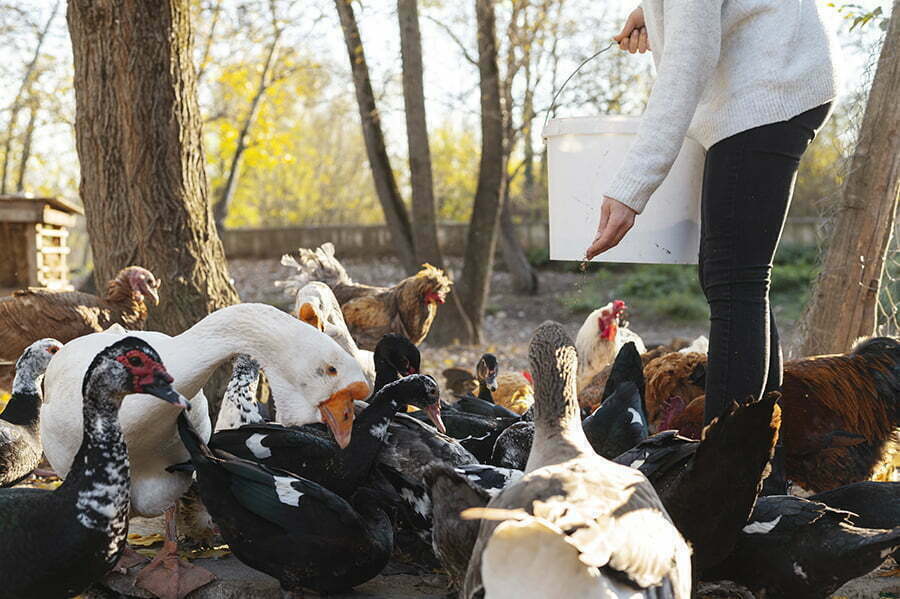
One alternative to using a garbage disposal is feeding food scraps to animals. This can be a great option for those with pets or livestock, as it reduces waste and provides additional nutrition for the animals.
For example, chickens love vegetable and fruit scraps, while dogs can enjoy meat and dairy leftovers.
However, there are some disadvantages to consider when using this method. Firstly, not all food scraps are safe for animals to consume – onions and garlic can be toxic to dogs in large quantities, while avocado pits contain persin which is harmful to many types of livestock.
Feeding too much human food may cause digestive issues or obesity in pets.
It’s important that you research what foods are safe for your specific animal before implementing this method of waste reduction into your routine. Overall though if done correctly it’s an eco-friendly way of reducing household waste whilst providing extra nutrients!
Plasma Gasification
Plasma gasification is a high-temperature process that converts waste into a synthetic gas (syngas) and an inert solid residue. The syngas can be used to generate electricity or as fuel for industrial processes, while the solid residue can be safely disposed of in landfills.
One advantage of plasma gasification is its ability to handle various types of waste, including hazardous materials such as medical and chemical wastes. It also has lower emissions compared to traditional incineration methods.
However, one major disadvantage is its high cost due to the complex technology involved in the process. It requires large amounts of energy input which may not make it feasible for small-scale operations or areas with limited access to reliable power sources.
Plasma gasification shows promise as an alternative garbage disposal method but further research and development are needed before it becomes widely adopted on a larger scale.
Pyrolysis
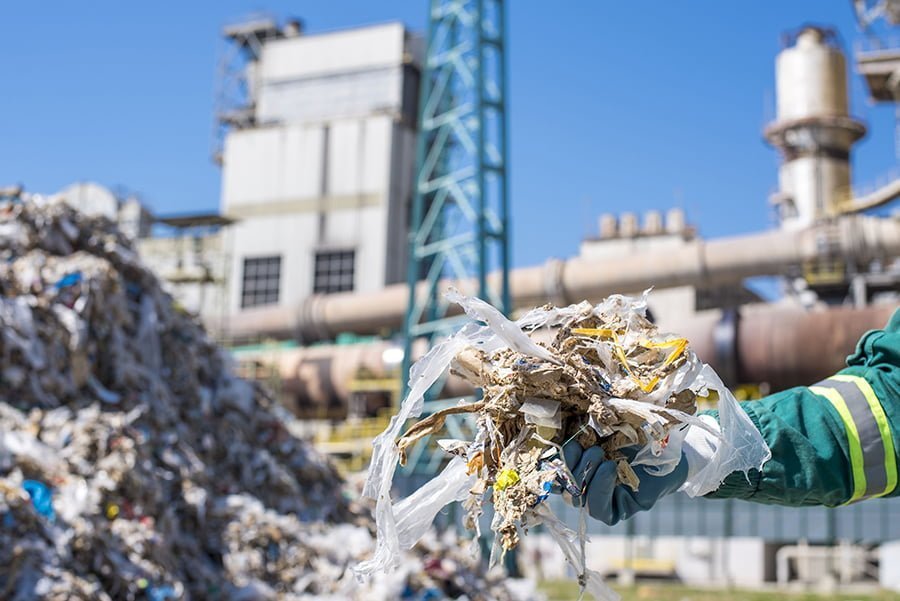
Pyrolysis is a process that involves heating organic materials in the absence of oxygen to produce gas, oil, and char. This method can be used as an alternative to traditional garbage disposal methods because it reduces waste volume by up to 90%.
The gas produced during pyrolysis can be used for energy production while the oil and char can be sold as valuable products.
One advantage of pyrolysis is that it produces less greenhouse gases than incineration or landfilling. This method does not require sorting or pre-treatment of waste before processing.
However, one disadvantage is that it requires high temperatures which may result in emissions if not properly controlled.
Pyrolysis offers a promising solution for reducing waste volume while producing useful products but further research on its environmental impact should be conducted before widespread adoption.
Biodegradable Packaging
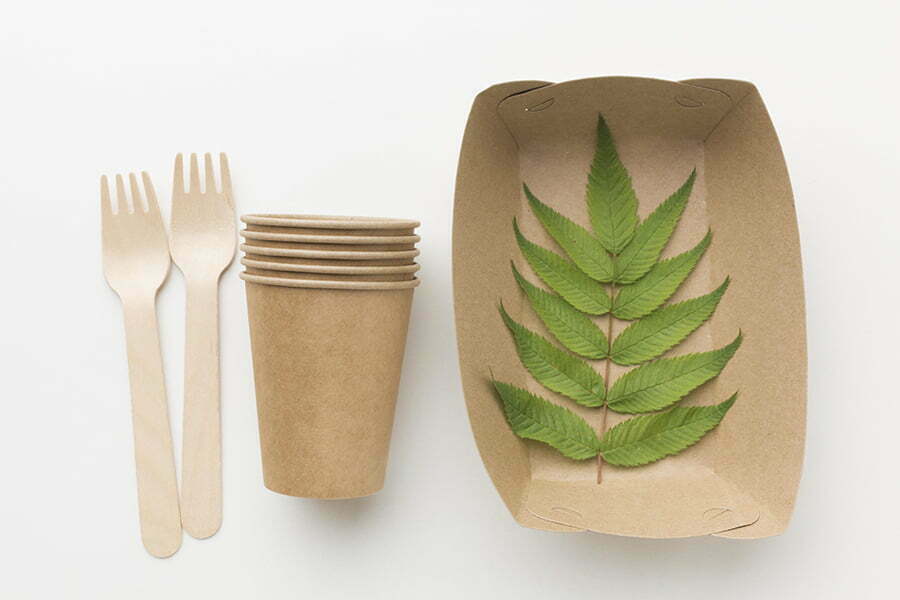
When it comes to reducing waste, biodegradable packaging is a great alternative to traditional plastic packaging. Made from natural materials such as cornstarch or sugarcane, these types of packages break down quickly and easily in the environment without leaving harmful chemicals behind.
One advantage of using biodegradable packaging is that it reduces the amount of waste going into landfills. Since these packages can be composted along with food scraps and other organic matter, they help divert waste away from overflowing landfills.
However, there are also some disadvantages to consider when using biodegradable packaging. For example, some types may not break down as quickly if they end up in a landfill where conditions aren’t ideal for decomposition.
Producing these types of packages requires energy and resources just like any other type of manufacturing process.
Overall though, incorporating more biodegradable options into our daily lives can positively impact both our homes and the planet we call home.
Zero Waste Lifestyle
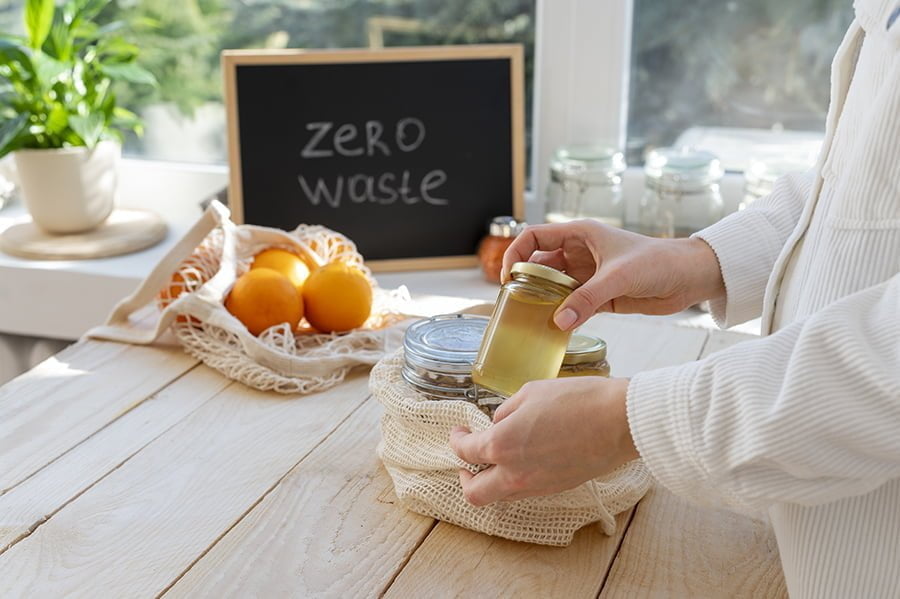
Living a zero waste lifestyle is becoming increasingly popular as people become more conscious of their impact on the environment. This lifestyle involves reducing, reusing, and recycling to minimize the amount of waste that ends up in landfills.
Adopting this approach can significantly reduce your carbon footprint and contribute to a healthier planet.
One way to embrace a zero-waste lifestyle is by using composting as an alternative to garbage disposal. Composting involves breaking down organic materials such as food scraps and yard waste into nutrient-rich soil that can be used for gardening or farming.
Not only does it divert these materials from landfills but also provides natural fertilizer for plants without relying on chemical fertilizers.
Another advantage of composting is that it reduces greenhouse gas emissions associated with landfill decomposition while improving soil quality by increasing its water retention capacity and promoting healthy microbial activity.
However, there are some disadvantages too; composting requires space (indoor or outdoor), time (upwards of 6 months), effort (turning over piles regularly) which may not be feasible for everyone’s living situation or schedule constraints.
If you’re looking for ways to live sustainably while minimizing your environmental impact then embracing a zero-waste lifestyle through practices like composting could be worth considering!
Landfill Diversion Programs
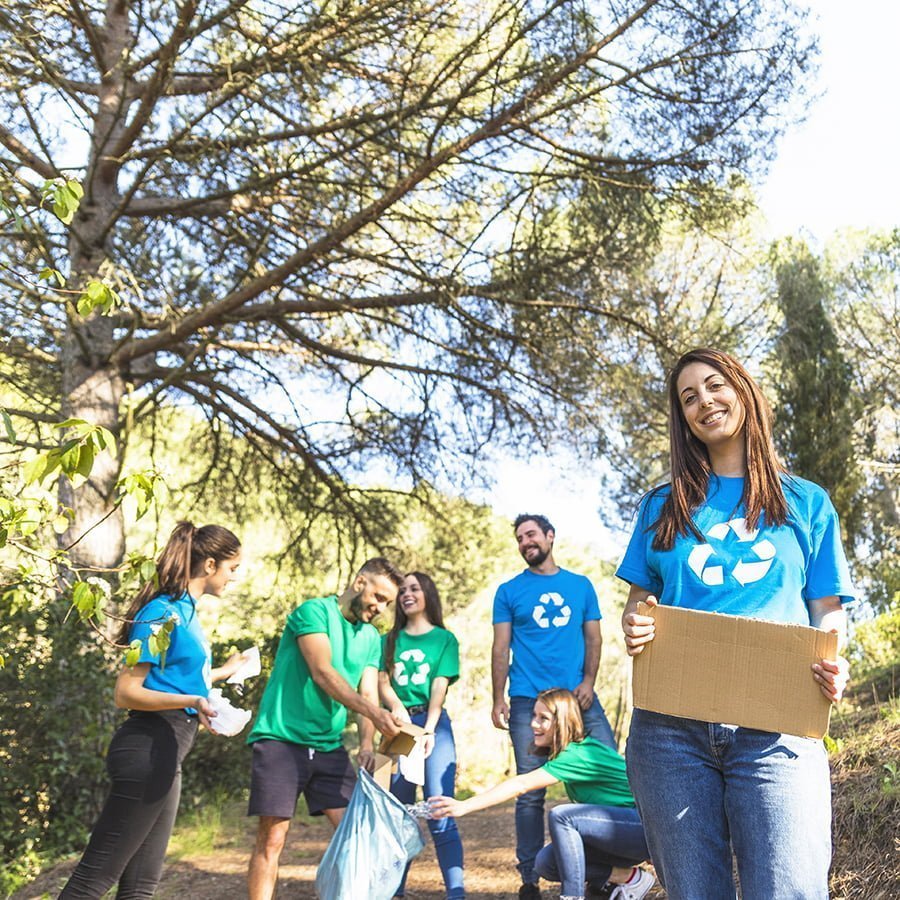
One effective way to reduce the amount of waste that ends up in landfills is through landfill diversion programs. These programs aim to divert waste from landfills by encouraging recycling, composting, and other forms of waste reduction.
One advantage of landfill diversion programs is that they help reduce the environmental impact associated with traditional garbage disposal methods. By reducing the amount of waste sent to landfills, these programs can help conserve natural resources and minimize greenhouse gas emissions.
However, one disadvantage is that implementing a successful landfill diversion program requires significant investment in infrastructure and education efforts. Some communities may face challenges related to limited space or lack of funding for such initiatives.
Despite these challenges, many cities have successfully successfully implemented landfill diversion programs. By exploring alternative ways to dispose of household items beyond simply throwing them away in a garbage disposal unit or trash bin can make a big difference towards creating sustainable living spaces while also saving money on home decor expenses!
Upcycling
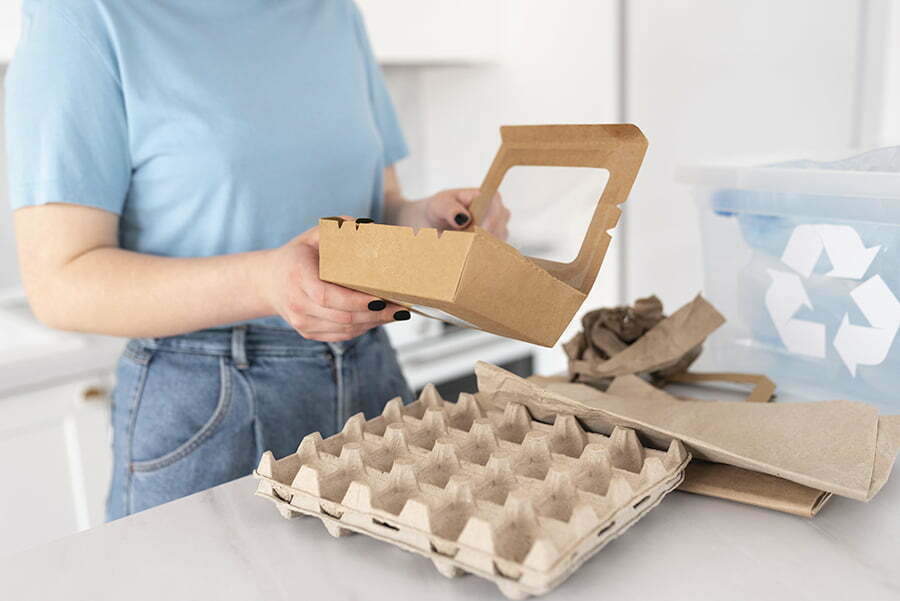
One of the most popular garbage disposal alternatives is upcycling. Upcycling involves taking items that would otherwise be thrown away and transforming them into something new and useful.
This not only reduces waste but also adds a unique touch to your home decor.
Advantages of upcycling include its affordability, as you can often find materials for free or at a low cost, and its eco-friendliness. Upcycled pieces are often one-of-a-kind and add character to your space.
However, there are some disadvantages to consider when it comes to upcycling. It can be time-consuming as you may need to clean or repair the item before transforming it into something new.
Also, not all materials lend themselves well to certain projects so it’s important to choose wisely.
If done correctly with creativity and patience in mind upcyling- is an excellent way of reducing waste while creating beautiful decor on a budget!
Community Swap Events
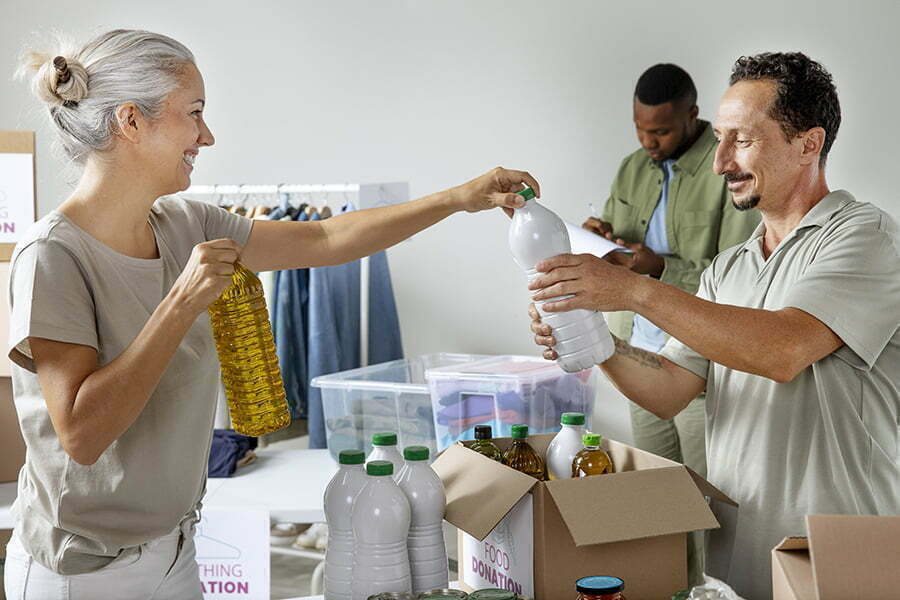
Community swap events are a great way to get rid of unwanted items and acquire new ones without spending any money. These events can be organized by local community centers, churches, or even online groups.
The idea is simple: people bring gently used items they no longer need or want and exchange them for something else.
The advantages of community swap events are numerous. First, it’s an eco-friendly way to dispose of unwanted items as they don’t end up in landfills.
Second, it’s a great opportunity to meet new people in your neighborhood who share similar interests with you. Thirdly, you can find unique pieces that may not be available at regular stores.
However, there are also some disadvantages to consider before attending these events. For instance, the quality of the exchanged goods may vary greatly from one item to another; some might be damaged or worn out beyond repair while others could still have plenty of life left in them.
If you’re looking for budget-friendly ways to decorate your home while reducing waste then attending a community swap event should definitely be on your list!
E-waste Recycling

When it comes to garbage disposal, e-waste or electronic waste is a growing concern. With the rapid advancement of technology, people are constantly upgrading their gadgets and devices, increasing e-waste.
Instead of throwing away old electronics like phones and laptops into the trash bin where they end up in landfills and harm the environment, consider recycling them.
E-waste recycling involves collecting discarded electronics for processing so that valuable materials can be extracted from them for reuse.
This reduces environmental pollution and conserves natural resources by reducing mining activities needed to extract raw materials used in manufacturing new products.
One advantage of e-waste recycling is that it helps reduce greenhouse gas emissions associated with landfilling or incinerating electronic waste. Recycled metals such as copper can be reused instead of being mined again, saving energy required during extraction.
However, one disadvantage is that some recyclers may export hazardous wastes illegally causing environmental damage elsewhere while others may use unsafe methods during dismantling which poses health risks to workers handling these wastes.
If done correctly through certified recyclers who follow proper procedures for safe handling and disposal then E-Waste Recycling provides a great alternative solution when disposing off your old gadgets without harming our planet’s ecosystem!
Reusable Products
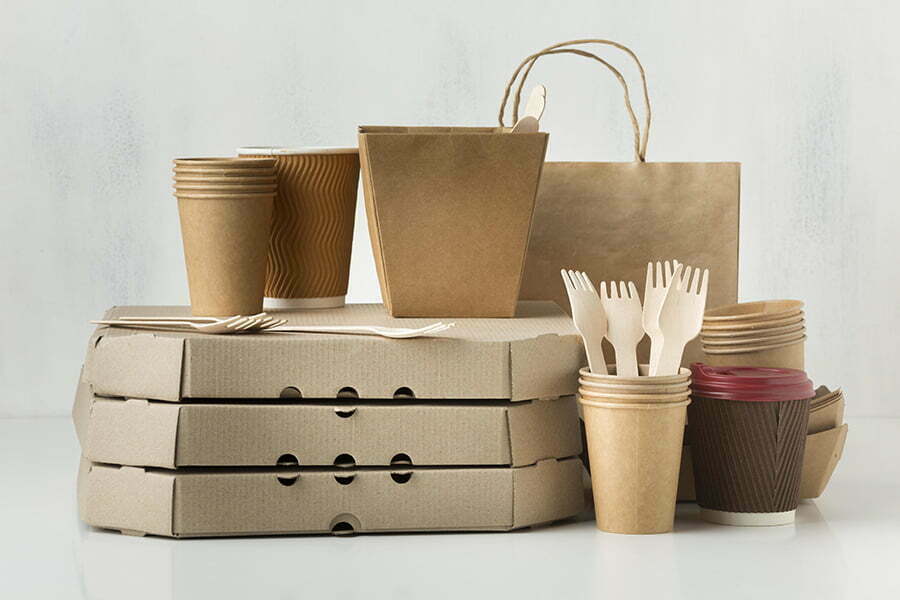
One of the best ways to reduce waste and save money in the long run is by using reusable products instead of disposable ones. For example, instead of buying paper towels or napkins, invest in cloth versions that can be washed and reused multiple times.
Similarly, using a refillable water bottle or coffee mug can eliminate the need for single-use plastic bottles or cups.
The advantages of reusable products are clear: they help reduce waste and save money over time since you don’t have to keep buying new items.
Many reusable products are made from sustainable materials like bamboo or organic cotton, reducing their environmental impact even further.
However, there are some disadvantages to consider as well. Reusable products often require more effort on your part since they need to be washed after each use.
They may also require an upfront investment that could be a barrier for some people who aren’t able to afford them initially.
Incorporating more reusable items into your home decor is a great way not only decorate on budget but also make positive changes towards sustainability while still maintaining style!
Recap




